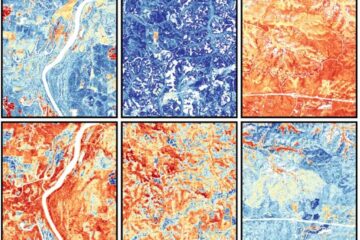Waters off Washington state only second place in world where glass sponge reefs found

The discovery in Washington waters extends the range of reef-building glass sponges into open ocean.
The sponge reefs could be important to the ecosystems on the Washington coast because they create a thriving oasis dense with sea life on seafloor that is otherwise sparely populated for miles, says Paul Johnson, UW professor of oceanography and chief scientist on the UW's ship Thomas G. Thompson, June 10-16, when the Washington glass sponge reefs were discovered. The glass sponge reefs were alive with zooplankton, sardines, crabs, prawns and rockfish.
“It's like looking at an overcrowded aquarium in an expensive Japanese restaurant,” he says.
The Washington sponge reefs are each hundreds of feet in length and width. It's possible that the state has reefs comparable to the Canadian reefs that are miles in length, Johnson says.
The glass sponge reefs on the continental shelf west of Grays Harbor appear to be thriving on specialized bacteria that consume methane gas that the UW scientists were surprised to discover flowing out of the seafloor in copious amounts. Methane has not been detected by Canadian scientists near their glass sponge reefs, thus the Washington margin reefs could represent a new type of ecosystem on the shelf, one where the abundant biology is fueled by methane gas derived from ancient carbon in the sediments, Johnson says.
The glass sponges – so-called because their skeletons are made of silica (the same material as beach sand) – come in un-sponge-like shapes similar to cups and funnels. They range in color from creamy white to brilliant hues of yellow. The reefs build upward as new generations of sponges grow atop the still-hard silica skeletons of previous generations. The reefs just discovered are in 650 feet of water and rise between 6 and 15 feet above the seafloor. The sponges on the mounds grow as tall as 1 ½ feet.
The mounds off Grays Harbor have the same trio of glass sponge species as the reefs discovered in Canadian waters. The reefs in the Georgia and Hecata straits are in relatively protected marine waters, causing scientists to previously speculate that those reef-building glass sponges required a special ecological niche that allowed them to grow in those waters.
The field discovered on the open Washington shelf is very exposed to winter storms, which makes it much more likely that other reef-building glass sponges are still to be found around the globe, for example, on the Alaskan and Russian continental shelves, Johnson says.
Solitary glass sponges are found living in many parts of the world's oceans but are composed of different species than the ones capable of colonizing themselves into reefs. Individual glass sponges generally live 100 to 200 years and the Canadian sponge reefs have been dated as being 8,000 years old, making them comparable to coral reefs and redwood forests, Johnson says.
The reef-building sponge species had their heyday 150 million years ago when ocean conditions allowed them to grown near the surface of the ocean. Their fossilized remains, for example, are found in outcrops that are hundreds of miles long on land throughout Europe, all sites that were underwater in the late Jurassic period. It was thought the reef-building glass sponges were all driven to extinction 100 million years ago when diatoms, single-celled algae that also require silica dissolved in seawater, evolved in the global oceans and began using up the silica needed by the reef-building glass sponges.
The Washington and British Columbia reef-building glass sponges have learned to live at water depths that are below the sunlit zone where diatoms live but where the essential dissolved silica they need is available.
Media Contact
More Information:
http://www.washington.eduAll latest news from the category: Life Sciences and Chemistry
Articles and reports from the Life Sciences and chemistry area deal with applied and basic research into modern biology, chemistry and human medicine.
Valuable information can be found on a range of life sciences fields including bacteriology, biochemistry, bionics, bioinformatics, biophysics, biotechnology, genetics, geobotany, human biology, marine biology, microbiology, molecular biology, cellular biology, zoology, bioinorganic chemistry, microchemistry and environmental chemistry.
Newest articles

Machine learning algorithm reveals long-theorized glass phase in crystal
Scientists have found evidence of an elusive, glassy phase of matter that emerges when a crystal’s perfect internal pattern is disrupted. X-ray technology and machine learning converge to shed light…

Mapping plant functional diversity from space
HKU ecologists revolutionize ecosystem monitoring with novel field-satellite integration. An international team of researchers, led by Professor Jin WU from the School of Biological Sciences at The University of Hong…

Inverters with constant full load capability
…enable an increase in the performance of electric drives. Overheating components significantly limit the performance of drivetrains in electric vehicles. Inverters in particular are subject to a high thermal load,…





















